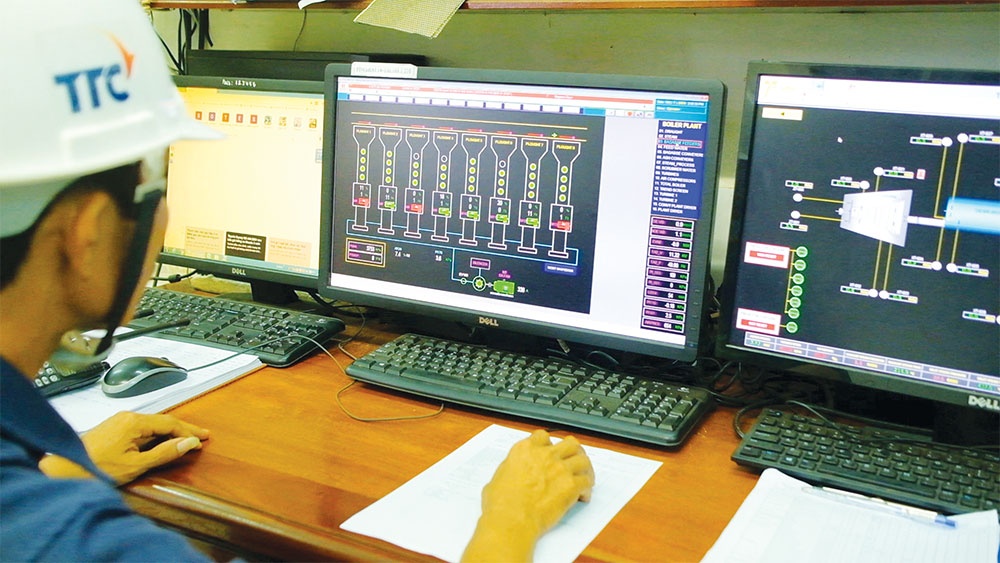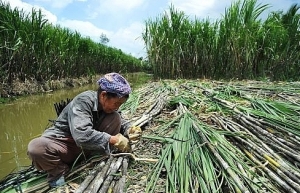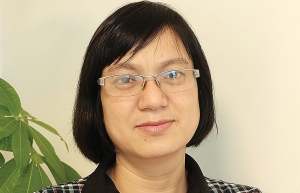Biomass boost to fuel power evolution
An MoU on cooperation in research and development of biomass power generation and fuel production in Vietnam was signed last week between Japan Electric Development Co., Ltd. and Vietnam Forestry Corporation. It mainly attracts the interest of foreign energy developers, especially from Japan.
Cooperating with the largest state-owned forestry company in Vietnam which manages about 43,000 hectares of forest, the Japanese company aims to expand its biomass electricity business in Vietnam. At the same time, it participates in the biomass-based fuel supply chain, thereby accumulating knowledge and experience in the sustainable use of this fuel source.
 |
| Current exploitation of biomass energy remains quite low in Vietnam, Le Toan |
In Vietnam, a long-term investment plan is also being implemented by Japan’s Erex Group. The group’s president Honna Hitoshi visited Vietnam in March, working with several stakeholders on the plan to develop around 1,500MW of biomass power by 2035.
Nearly 20 projects could be implemented following Erex’s survey over 16 cities and provinces in the country, and the development of biomass plants to generate electricity.
Hitoshi said, “Biomass electricity provides stable energy at competitive prices amid rising fossil fuel prices. The conditions given by Erex are that project sites must be at least 6-10ha wide and cannot overlap with other plans, along with proximity to raw materials, convenient transport options, and 110kV power lines.”
Thanh Hoa, a north-central province of Vietnam, has had more than 10 years of experience in developing biomass power. Thanh Hoa wants to take advantage of biomass from almost 2,500 square kilomtres of planted forests and by-products of its sugar production.
Thanh Hoa Department of Industry and Trade has also announced a list of five locations where factories can be located, meeting the conditions for raw materials and convenient substations to connect power sources to the national grid. However, these efforts have not yet produced any results. In addition, Thanh Hoa has only developed three power generation projects using bagasse fuel with a total capacity of almost 48MW.
According to calculations by the Vietnam Energy Institute, the country’s biomass raw materials are abundant, estimated to reach about 118 million tonnes per year. However, the current exploitation of biomass energy remains very low, accounting for only 0.94 per cent of installed capacity up and down the country.
Nguyen Anh Tuan, former director of the Department of Electricity and Renewable Energy under the Ministry of Industry and Trade (MoIT), said that Vietnam has 10 biomass power plants but most of them are only for internal usage, and have not been sold to the national grid.
“The power dispatching system only recorded 175MW coming from three power plants in Phu Yen, An Khe, and Tay Ninh areas. The total electricity output sold to the grid in 2020 was around 346 million kWh, accounting for only 0.14 per cent of the country’s total electricity,” Tuan said.
According to Tuan, the development of biomass electricity in Vietnam is difficult for many reasons. The first is the unstable and unsustainable supply of fuel, as the prices of raw materials often change according to the season.
The next biggest obstacle would be the large initial investment. “Currently, the state has not planned areas for the development of biomass power projects. Meanwhile, enterprises in Vietnam still lack experience in its development, and there’s a lack in engineers and skilled workers to build and operate biomass power projects,” Tuan explained.
Vietnam advocates for diversifying supply sources, focusing on renewable energy, but biomass electricity is still on the sidelines of power development. In 2021, the installed capacity of biomass power plants was still at 325MW, accounting for merely 0.42 per cent of the total capacity while the electricity output reaches 321 million kWh, accounting for 0.13 per cent of the whole system’s output.
Meanwhile, the capacity of wind and solar power reached nearly 20,700MW, accounting for nearly 30 per cent of the total installed capacity, according to the 2021 National Power System Operation Review Report from Electricity of Vietnam.
The demand for electricity in Vietnam has increased in recent years and skyrocketed by nearly 400 per cent during between 1998 and 2008. According to the MoIT, the energy demand in Vietnam is now growing at twice the rate of GDP growth, while in developed countries this rate is closer to the same proportion.
The MoIT calculates that by 2035, the total potential of all types of biomass is more than 9,600MW, coming from about 370MW of rice husks, 3,360MW of forestry by-products, 470MW of bagasse, 1,300MW of rice straw, and 1,370MW of biogas.
However, many biomass power developers believed that Vietnam needs to offer more incentives to attract investment in biomass power development.
| The Vietnam Renewable Energy Development Strategy towards 2030, with a vision to 2050 – which was approved by the prime minister in 2015 – aims to reach a proportion of electricity produced from biomass of 3 per cent by 2020, 6.3 per cent in 2030, and 8.1 per cent in 2050 while the share of heat produced from biomass sources is expected to reach about 17 per cent by 2020, 14 per cent in 2030, and 12 per cent in 2050. The strategy also aims to increase the proportion of biomass energy in electricity production to 1 per cent by 2020, 2.1 per cent by 2030, and 8.1 per cent by 2050. In 2014, the prime minister issued Decision No.24/2014/QD-TTg to support the development of biomass power projects in Vietnam. By 2020, a number of articles continued to be amended and supplemented by Decision No.08/2020/QD-TTg. |
 | New FiT hike paves way for investment in biomass electricity The feed-in tariff (FiT) for biomass power projects will range from VND1,634 to VND1,968 (7.1-8.6 US cents) per kWh, exclusive of value-added tax, setting the stage for more investment in biomass electricity and to achieving the objectives of the revised Power Development Plan VII. |
 | New biomass FiT promises a green economic future Vietnam has just promulgated a new policy on the feed-in tariff for biomass power projects. Adam Ward, the Global Green Growth Institute’s country representative for Vietnam, provides an in-depth analysis of how the new rate will help the country attract more biomass power investments, with some policy recommendations. |
 | Encouraging biomass energy to buttress turn to renewables Biomass has the potential to be a critical portion of Vietnam’s renewable change. Le Thi Thoa, senior officer of the Climate Protection through Sustainable Bioenergy Markets in Vietnam project under the GIZ Energy Support Programme, points out barriers for the sector and how GIZ provides support to meet its ambitious plan for biomass power in Vietnam. |
What the stars mean:
★ Poor ★ ★ Promising ★★★ Good ★★★★ Very good ★★★★★ Exceptional
Related Contents
Latest News
More News
- Efficient technology solutions key factors in energy transition (September 25, 2024 | 09:00)
- Sao Do Group gears towards energy savings (December 07, 2023 | 12:01)
- Vice President Vo Thi Anh Xuan visits Copenhagen Infrastructure Partners headquarters (November 23, 2023 | 10:37)
- A wind turbine tower collapses in China (November 20, 2023 | 19:36)
- Vietnam has massive potential for offshore wind energy (March 17, 2023 | 16:29)
- Rooftop solar event entices EPC contractors and investment funds (March 09, 2023 | 07:50)
- GreenYellow acquires 49.5MWp solar farm of French IPP Qair in Vietnam (November 25, 2022 | 08:00)
- Eaton contributes to Vietnam’s low-carbon economy (November 20, 2022 | 19:00)
- Proposals to promote Vietnam's energy transition (November 12, 2022 | 22:02)
- How intelligent lights make cities smarter, safer and greener (November 04, 2022 | 09:00)

 Tag:
Tag:





















 Mobile Version
Mobile Version